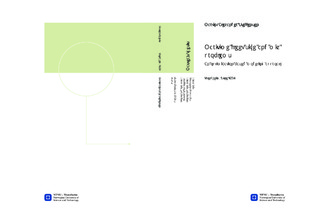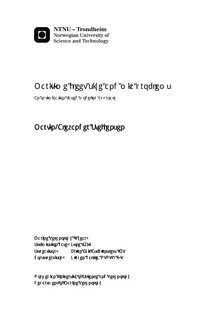| dc.contributor.advisor | Asbjørnslett, Bjørn Egil | nb_NO |
| dc.contributor.advisor | Rakke, Jørgen | nb_NO |
| dc.contributor.author | Steffensen, Martin-Alexander | nb_NO |
| dc.date.accessioned | 2014-12-19T12:08:23Z | |
| dc.date.available | 2014-12-19T12:08:23Z | |
| dc.date.created | 2012-11-08 | nb_NO |
| dc.date.issued | 2012 | nb_NO |
| dc.identifier | 566244 | nb_NO |
| dc.identifier | ntnudaim:7676 | nb_NO |
| dc.identifier.uri | http://hdl.handle.net/11250/238304 | |
| dc.description.abstract | This master thesis addresses the maritime fleet size and mix problem (MFSMP). Finding the optimal fleet size and mix of ships for future needs is arguably the single most important decision of a ship owner. This thesis has examined the accuracy with which a developed mathematical formulation of the problem is at predicting fleet demand under various conditions. The FSM model that has been studied is an extension of a model already established by the MARFLIX project. Because of the thesis link to the MARFLIX project, the considered shipping segment is deep-sea Ro-Ro. For testing how accurate the FSM model is at creating a fleet that can handle complex routing constraints a deployment model has been developed. The consistency of the model under different time frames, varying bunker costs and effects of using continuous instead of integer variables in the FSM model was also tested.The major findings of the work was that the fleet proposed by the the FSM model, in its current form, often is undersized. The fleet size and mix problem is usually considered a strategic problem, with time horizons up to several years. However, this particular model performed better for shorter time frames. Using continuous variables on the different trips undertaken by the fleet proved to have little impact on the fleet composition, but the loss of a vessel could occur. The method proved, however, to be significantly faster than the using integer variables. Changes in the cost of fuel had immense impact on the fleet composition, and one should always be clear on the effects of fluctuations in fuel costs have on a fleet. In general, when the price increased the fleet got larger and slow steamed a larger portion of the fleet.Further work should be made on improving the routing capabilities of the FSM model. In its present form the model cannot be relied upon as the only means for establishing the actual optimal fleet. It can, however, be used as a guidance | nb_NO |
| dc.language | eng | nb_NO |
| dc.publisher | Institutt for marin teknikk | nb_NO |
| dc.subject | ntnudaim:7676 | no_NO |
| dc.subject | MIMART Marin teknikk (2 årig) | no_NO |
| dc.subject | Marin prosjektering | no_NO |
| dc.title | Maritime fleet size and mix problems: An optimization based modeling approach | nb_NO |
| dc.type | Master thesis | nb_NO |
| dc.source.pagenumber | 81 | nb_NO |
| dc.contributor.department | Norges teknisk-naturvitenskapelige universitet, Fakultet for ingeniørvitenskap og teknologi, Institutt for marin teknikk | nb_NO |

